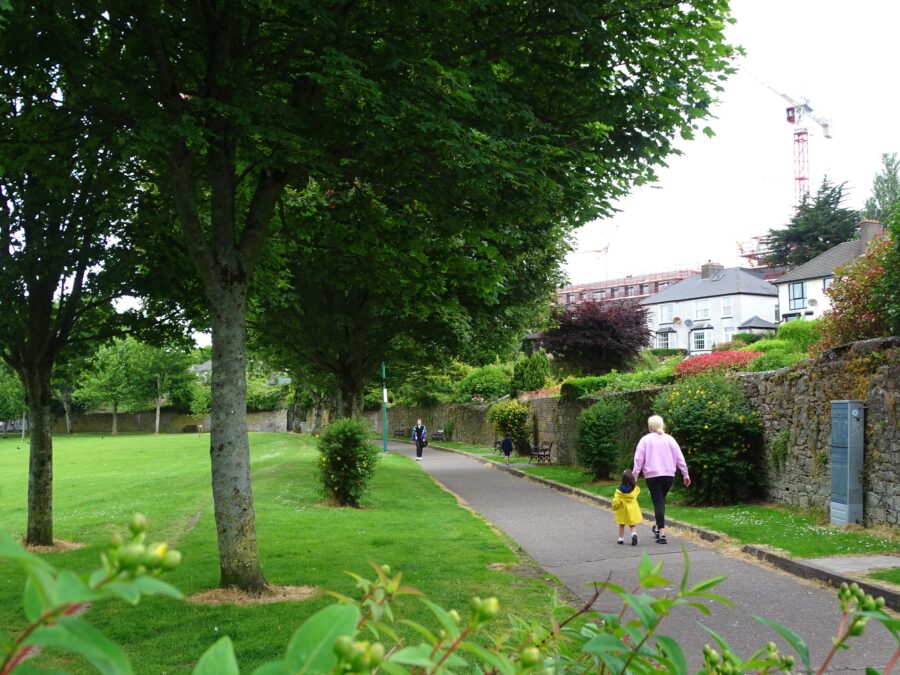
Kieran’s Our City, Our Town Article,
Cork Independent, 15 July 2021
Journeys to a Truce: The 11 July 1921 Settlement
This week is the centenary of the signing of the Truce on 11 July 1921 bringing the Irish War of Independence in Ireland to an end. Technically talks had begun in December 1920 but they petered out when British Prime Minister David Lloyd George demanded that the IRA first relinquish their arms. Renewed talks began in the spring of 1921, after the Prime Minister was lobbied by Herbert H Asquith and the Liberal opposition, the Labour Party, and the Trades Union Congress.
From the perspective of the British government, it seemed as if the IRA’s guerrilla campaign would persist indefinitely, with escalating losses in British casualties and in finance. In addition, the British government was confronting acute blame at home and abroad for the measures of British forces in Ireland. On 6 June 1921, the British made their first peace-making act, calling off the strategy of house burnings as reprisals.
On the other side, IRA leaders and in particular Michael Collins, felt that the IRA, as it was then organised, could not continue indefinitely. It lacked arms and ammunition to face down the even regular British soldiers arriving into Ireland.
On 24 June 1921, the British Coalition Government’s Cabinet decided to propose talks with the leader of Sinn Féin. Coalition Liberals and Unionists agreed that an offer to negotiate would strengthen the Government’s position, especially if Sinn Féin refused. On 24 June Prime Minister Lloyd George wrote to Éamon de Valera as “the chosen leader of the great majority in Southern Ireland”, suggesting a conference.
Sinn Féin agreed to talks. De Valera and Lloyd George ultimately agreed to a truce that was intended to end the fighting and lay the ground for detailed negotiations. Its terms were signed on 9 July and came into effect on 11 July. Negotiations on a settlement, however, were deferred for several months as the British government demanded that the IRA first decommission its weapons, but this demand was ultimately withdrawn. It was arranged that British troops would stay restricted to their barracks.
However, in the three days between the terms being signed and coming into effect, Irish Truce historian Pádraig Óg Ó Ruairc details at least sixty people from both sides of the conflict were killed across the country. Such stories appear in the heart of Dara McGrath’s photographic exhibition entitled For Those That Tell No Tales in the Crawford Art Gallery on sites associated with the War of Independence. There is a poignant picture of an execution location of The Lough with associated descriptive text. It was at 8 pm, on the evening of Sunday 10 July 1921, four young unarmed and off-duty soldiers, Private Henry Morris (aged 21) and Corporal Harold Daker (aged 28) of the South Stafforshire Regiment and Sappers Albert Camm (aged 20) and Albert Powell (aged 20) of the Royal Engineers were seized by a patrol of seven Volunteers. The Volunteers had been searching an area from Donovan’s Bridge along the Western Road in search of a suspected civilian informer. Executed on the northern side of The Lough, the four bodies were dumped at Ellis’s Quarry on its southside. All four were found blindfolded and shot dead.
The only surviving account of the executions by a Volunteer participant is the official report sent to IRA Headquarters. It simply reads: “We held up four soldiers and searched them but found no arms. We took them to a field in our area where they were executed before 9pm”. It has been suggested that the killing of these men was a personal reprisal by the IRA for the murder of Volunteer Denis Spriggs just two days earlier on 8 July. Private Morris was from Walsall and served in the East Kent Regiment during the First World War. He is buried in Ryecroft cemetery, Walsall. Corporal Daker was the son of William and Mary Daker. He is buried in St Ann’s Churchyard, Chasetown, Walsall. Sapper Albert Camm was from Holland Street in Nottingham. Sapper Powell was the son of Arthur and Jane Powell of Abbott Road, London. He is buried at Nunhead, All Saints Cemetery in Southwark.
On the advent of the Truce, Michael O’Donoghue, Engineer Officer with the 2nd Battalion of Cork No.1 Brigade remarks in witness statement (WS 1741) of the Bureau of Military History of a new-found freedom and an almost too good to be true scenario;
“Now came July, and with the scorching summer heatwave came rumours of peace and negotiations for a cease fire. Then before we had time to realise what was happening, as everything moved so suddenly, the Truce was upon us on a July 11th 1921 at midday. Overnight everything was changed. The fugitive rebel army, the IRA, was recognised as Ireland’s national army by the British Government. There was an uneasy peace. ‘Twas hard, even for the IRA themselves, to credit that the fortunes of war had changed to such an extent. we could now move everywhere in town and country. We exulted in our new found authority and importance. Everywhere the people regarded us as heroes and hailed us as conquerors and turned our heads with flattery, adulation and praise. We were youngsters in our teens and early twenties, and who could blame us if we got intoxicated with all the hero worship and rejoicings. Even those people who had maintained a cautious neutrality, standing on the ditch during the War of Independence, now rushed to acclaim us and to entertain us”.
Caption:
1108a. Execution location site for four British soldiers, 10 July 1921 at northern side of The Lough, Cork, present day (picture: Kieran McCarthy)